Alumni Spotlights: LSU Student Government Presidents Then and Now - Part II
This is the second in a series of stories on LSU Student Government presidents. Stories told by LSU Student Government presidents from the 1950s to...
This is the first in a series of stories on LSU Student Government presidents. Stories told by LSU Student Government presidents from the 1950s to the present are a reminder of how much things change and how much they stay the same. The first part in the series focuses on the 50's, 60's and 70's.
This is the first in a series of stories on LSU Student Government presidents, which will appear on LSU Alumni Association blog and in future issues of LSU Alumni Magazine.
Stories told by LSU Student Government presidents from the 1950s to the present are a reminder of how much things change and how much they stay the same.
Elaine Abell (1963-64), LSU’s first female student body president, remembers rolling up her long pants and putting on a coat to walk across campus. Coeds weren’t allowed to wear slacks on campus.
Roger Ogden’s (1967-68) resume reads like a one-man “who’s who” of service to LSU. He talks about the cultural diversity of his undergraduate days and the ethnic diversity of today’s campus.
In Stephen Moret’s term (1993-94), the biggest issue was the state’s underfunding of Louisiana’s flagship research university. Moret, who was an undergraduate when some LSU students pitched in to help paint classrooms, thinks little has changed in that regard.
Stewart Lockett (2018-19) is the third black student elected to head the LSU student body. LSU, he thinks, sometimes echoes the divisiveness of his home state. The students who elected him president represent a different demographic, Lockett said.
1950s
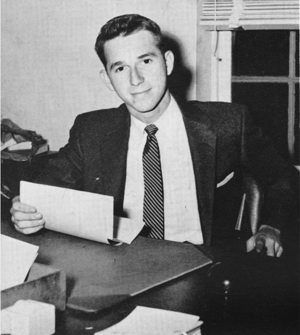 FRANK FOIL
FRANK FOIL
When Frank Foil (1956 JD), SGA president in 1955-56, entered LSU in 1952, World War II had been over for seven years. Returning veterans had used the GI Bill to go to college. Many of Foil’s classmates at LSU had been in grammar school during the war. “Students weren’t mindful of World War II,” Foil said. “I was in the Marines between Korea and Vietnam. For the most part, we had a peaceful country.”
One of the controversies on campus was whether to build a new library or extend the football stadium, he said. “You know who won out.”
A library bearing the name of one of Foil’s mentors, Gen. Troy Middleton, would eventually replace Hill Memorial as the campus library. Plans now are to demolish Middleton and leave a green space between Hill and the Campanile. A site near the intersection of Field House and South Campus drives has been mentioned as the location for a new library.
In the mid-50s, student unions were being built on college campuses around the country. Before LSU’s Student Union, students hung out at the Huey P. Long Fieldhouse. “There was a coffee shop,” Foil recalled, “but most events were in the Gym Armory.”
“Dean of Men Arden O. French was pushing for a student union,” Foil said. “He and I worked together to put a referendum on the ballot to see if students would OK a fee increase. It passed. Dean French had a lot of vision.” Board of Supervisors member Theo Cangelosi, a member of the LSU Board of Supervisors was a leading sponsor of the project, Foil said.
In Foil’s undergraduate days, tuition was about $40. “That included tickets to all athletic events and a yearbook. You could go to your legislator to get a fee exemption scholarship, so you went to school for very little.”
One thing students didn’t have was health insurance. “The Union was a big thing because eighteen-year-olds don’t worry about their health,” Foil said. “Getting a health insurance program passed was one of my big successes. There were some car accidents later, and the parents were grateful.”

It fell to Foil to help bring the Four Freshmen, Louis Armstrong, and band leader Harry James to campus for performances. Paul Dietzel was hired as football coach and Jim Corbett as athletic director when Foil was SGA president. Dietzel and Corbett courted the students, Foil said. “They took me a lot of places. I sat on the bench at all LSU home games and flew with the team to the Maryland game in 1955. There was a train trip for students to the Rice game in Houston. Fans from New Orleans took the train to games.” And, the University had its own humble depot near old Alex Box Stadium, he recalled.
When Foil returned to campus to attend law school (1960-63) after the Marines, the Middleton Library, new in 1959, was open and, in 1961, ground was broken for the new Union.
Besides his degrees, Foil enjoyed the University’s social life. “I met people from all over Louisiana.” During his second year in law school, Foil met future wife Judy at a party at the home of U.S. Sen. Russell Long. Foil practiced law in Baton Rouge until he was elected city judge in 1974. He was elected to the 19th Judicial District Court two years later and to the Louisiana Court of Appeal, 1st Circuit, in 1987.
Foil, 84, retired in 2005.
1960s
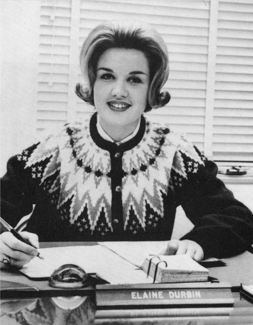 ELAINE DURBIN ABELL
ELAINE DURBIN ABELL
Elaine Durbin Abell’s national notoriety as LSU’s first woman SGA president in 1963 was short lived.
She has an apologetic letter from a Life magazine editor who’d sent a writer and photographer to LSU to write about her groundbreaking victory. The letter cited breaking international and national events – continuing fallout from the Cuban Missile Crisis and southern voter registration – that pushed her story from the pages of the magazine. “Please don’t take this as any reflection on your charm or remarkable achievement,” the editor wrote.
The Life editor sent Abell (1964 BACH BUS, 1969 JD) some of the photos that were to have accompanied the story and a promise to revisit the “Elaine Abell story when she was elected governor of Louisiana.”
The 1960s kept the rhetoric flowing in Free Speech Alley, a pedestrian cut-through between the Student Union and the Union Theater. There was the Bay of Pigs in 1961, the Cuban Missile Crisis in 1962, the assassination of President Kennedy in 1963, and the escalating war in Vietnam.
Abell’s election as the first woman SGA president wasn’t a big deal for her or the student body, the Lafayette lawyer recalled. There was no prohibition against a woman student running for SGA president. By tradition, however, only men ran for SGA president and vice president. Women vied for co-ed vice president. Abell decided to run for president rather than oppose a friend for co-ed vice president.
“The students at LSU didn’t necessarily make an issue of me being a female,” Abell said. “It was more an issue with the media and people outside the LSU community. This was the same several years later when Kerry Pourciau and Kirk Bennett, the first and second black SGA presidents ran for office. We all ran on our qualifications, not our gender or race.”
The University was, however, paying attention to gender. “Being a female on the LSU campus, you were not allowed to wear long pants walking across campus unless they were rolled up under a trench coat” – giving the appearance the co-ed was wearing a skirt, Abell said. “We had curfew every night and room check after we were in the dorm. Quiet hours were after room check and during exam week. Violations could cause you to be ‘campused’ in the dorm for a whole weekend. We signed in and out of the dorm at night. Phones were cut off at 10 p.m. until morning.”
“As SGA president, my telephone was left on,” she said.
An expanding campus was making students park considerable distances from the heart of campus and classes. Among her achievements, Abell lists bringing the Tiger Train to campus. The student-mover was a train of cars pulled by a tractor covered in fiberglass with a tiger head on the front. This time, her efforts made the national press when the New York Times ran a photo of the Tiger Train.
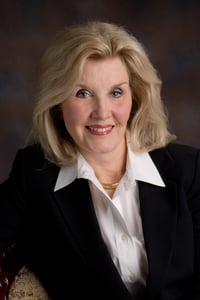
Under Abell, the SGA posted a student at the legislature to monitor legislation affecting LSU. The lack of state funding was having an impact on the campus and students, Abell said.
Following her graduation from law school, she clerked for Louisiana Supreme Court Justice Joe Sanders (LSU SGA president in 1937-38).
People Abell met at LSU, many of whom remain friends, helped her build an impressive record of public achievement that includes chairman of the LSU Board of Supervisors, chairman of the board of University Medical Center in New Orleans, chairman of the Lafayette Metropolitan Expressway Commission, LSU Honors College Advisory Council member, and seats on the Louisiana State Mineral Board and Council for a Better Louisiana (CABL).
She is a founding board member of Women’s and Children’s Hospital of Acadiana, was inducted into the LSU Alumni Association Hall of Distinction, and is a recipient of the Leah Hipple McKay Memorial Award for Outstanding Volunteerism from the Louisiana State Bar Association.
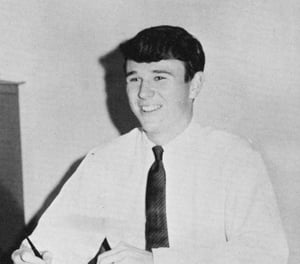 ROGER OGDEN
ROGER OGDEN
There is at least one LSU reference on every page in Roger Houston Ogden’s nine-page resume. Except one. That page shows Ogden (1968 BACH BUS) busy with pro bono and private development work in New Orleans, which Ogden calls home.
Ogden’s work outside the classroom in his student days, which saw his election to SGA president in 1967, suggested the long association the lawyer (Tulane, 1972) and commercial developer would have with LSU. Kappa Sigma brothers from around the state – from a studious teetotaler to one who opened beer cans with his teeth – introduced Ogden to the state’s cultural diversity, from Bastrop to LaFourche. And, they first informed him of the importance of LSU’s status as a flagship university. “Without a doubt,” Ogden said, “the most important thing, from my room at the Pentagon to graduation, was diversity. Then, it was geographical diversity. The whole state. That’s why it was relatively easy to increase the racial mix.”
Ogden counted as a friend Kerry Pourciau, elected the University’s first black SGA president in 1972. Pourciau died in 1994. “I learned from Kerry,” he said. “Deep down, he understood the importance of his victory as student government president. He knew it was a watershed, but he didn’t talk about it. He was humble. His was a significant victory. Mine was razor thin.”
Ogden was a member of the LSU Board of Supervisors from 1991 to 2004, vice chairman in 2000-02 and chairman 2002-04. “LSU was 4- to 5-percent black in 1991,” he said. “We set a goal to be at no less than 11 percent by 2000. I guess we’re somewhere near 15 percent and, now, our African-American brothers and sisters realize that in the 21st century it’s about Hispanics, Asians, and Native Americans, too.”
“As SGA president, we identified two big things,” Ogden said. “First, there was the one-mile ban on liquor sales from the perimeter of the campus. That’s why the bars were so far down Highland Road. And there was mandatory ROTC. I was in ROTC, but I didn’t think it should be compulsory in 1967-68.”
“We worked with the (East Baton Rouge) Parish Council on the alcohol ban and the administration and Board of Supervisors on making ROTC voluntary,” Ogden said.
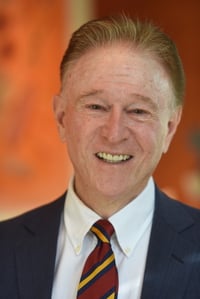
Ogden’s $2 billion in private and public development projects include commercial real estate, work on the New Orleans Aviation Board and the new New Orleans airport terminal set to open in early 2019; Audubon Park Commission (he chaired work on the aquarium and Riverfront Park); oversight committee on the E.J. Ourso College of Business building, constructed with state and private money; and the Ogden Museum of Southern Art.
LSU’s honors program – the Roger Hadfield Ogden Honors College – is named for Ogden’s father and son who share the same name. Though Ogden has lent his talents and fortune to LSU and Louisiana projects over the years, he counts as his biggest achievement the success of his son, Field, who graduated from Harvard University before enrolling at the LSU School of Medicine, eventually becoming an orthopedic surgeon. “I, finally, got my Tiger,” Ogden said.
1970s
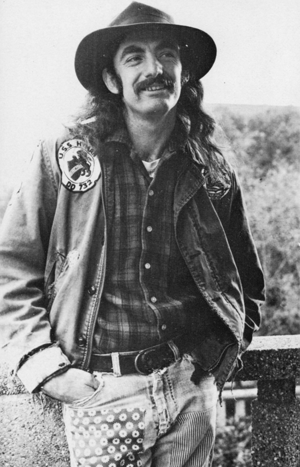 TED SCHIRMER
TED SCHIRMER
LSU was child’s play compared to Ted Schirmer’s time in Vietnam with Inshore Undersea Warfare Group 1 (UG-1). Schirmer (1978 BACH H&SS) would liven up campus before, during, and after his 1976-78 term as SGA president.
Schirmer’s detractors, who tried to recall him and impeach him, neither successfully, said he burned bridges between SGA, the administration, and the Board of Supervisors. “I didn’t burn the bridges,” Schirmer laughed. “I refused to pay the tolls.”
Schirmer, who saw combat in Vietnam, thought he’d left military regs behind when he enrolled at LSU only to find hair and dress codes for male students and curfews for women. He and other activists set about changing that.
Schirmer graduated from Istrouma High School after a childhood of moving around the country landed him in Baton Rouge. He describes his childhood as frequent school changes and his father’s trying to stay one step ahead of the bill collectors. Schirmer was the first person in his family to graduate from high school let alone college or law school. Because his early education was so spotty, Schirmer said he was semi-literate when he got to LSU, but he was smart and had a good memory. “I could pass tests, especially multiple choice.”
He came to LSU for the football. He was delighted to learn his SGA presidency allowed him and a date admittance to the sky boxes in Tiger Stadium. Schirmer and his date arrived in hippie attire barefooted.
The SGA president had a non-voting seat on the LSU Board of Supervisors. Schirmer, representing the study body, showed up at a board meeting unshod and casually dressed. “Kitty Strain, the board secretary forever, got me to wear shoes and, later, a suit,” Schirmer said. “I borrowed a suit from a friend.” 
Schirmer’s date to football games eventually moved on to Amsterdam and Schirmer to law school. After obtaining a bachelor’s degree in general studies, he did well enough on his LSAT to get into the LSU law school, but the law school made it plain he wasn’t wanted, Shirmer said. “All they had to do was let me in the law school, and I would have flunked out and never become a lawyer,” Schirmer said. “They did me a favor.”
The Southern University law school wasn’t thrilled by Schirmer’s decision to matriculate there, either, Schirmer said. “But I had letters from Paul Murrill, Jerry McKernan, and Camille Gravel,” he said. Murrill was the LSU chancellor. McKernan and Gravel were members of the Board of Supervisors. “I was a pain in Paul’s ass, but we had a good working relationship,” Schirmer said. “Paul didn’t think his job was to beat me down. He knew my job was representing students.”
After graduating from LSU in 1978, Schirmer moved to Illinois to work for Aid for Dependent Children in Chicago. Back in Louisiana, he started the Louisiana Public Action Council in 1983, representing people affected by the 1982 Livingston train derailment. After he got his law degree from Southern University in 1983, he opened a law office in Beauregard Town taking “civil rights, handicapped discrimination and rent law” cases.
Today, he lives with his wife outside Santa Cruz, Calif., where he retired from the Los Angeles Public Defenders Office in 2016.
Does he keep up with LSU? Besides football. “Well, I read The Advocate. I bleed purple and gold. I’m sitting here drinking a Diet Dr. Pepper in an LSU Alumni Association coozie someone gave me.”
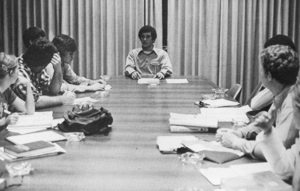 JAY DARDENNE
JAY DARDENNE
Jay Dardenne, 1977-78 SGA president and now Gov. John Bel Edwards’ Division of Administration commissioner, lists among his accomplishments winning the fight to continue allowing students to get into LSU football games on their ID’s rather than with tickets, helping develop a textbook rental program, fighting to keep Paul Grosser a tenured member of the political science faculty; and “restoring a reasonable working relationship between SGA and the administration.” Dardenne’s presidency followed that of activist Ted Schirmer, whom Dardenne called “controversial and confrontational.” “I advocated for a different attitude that would better serve the student body,” Dardenne said.
Dardenne (1976 BACH MCOM, 1979 JD) attributes his successes as SGA president to his role as student member of the LSU Board of Supervisors. “I initiated discussions at the legislature to allow the nonvoting student member to vote,” he said. “I testified at the legislature on the constitutional amendment that went to the voters and was passed the year after my service as SGA president.”
“Preventing the change in the football ticket policy and ensuring that Paul Grosser stayed on the faculty were also highlights,” he said. Grosser’s critics pointed to what they said was his lack of research. Dardenne and Grosser’s supporters called him one “of the more popular teachers on campus.”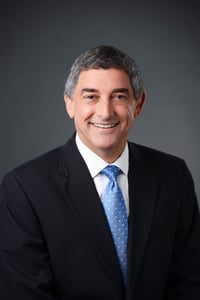
In his student days and as a member of Sigma Chi fraternity, Dardenne got involved with the Muscular Dystrophy Association (MDA) by chairing the LSU Charity Marathon, a weeklong, twenty-four-hour-a-day flag football game. “I succeeded Jerry Lewis’ son, Ron, as the National Youth Chairman for MDA,” Dardenne said, “and represented LSU in a high-profile capacity that involved young people from across the country volunteering in fundraising and patient service activities.”
Twice elected Louisiana’s lieutenant governor, Dardenne served four years as secretary of state, fifteen years as a state senator, and three years as a Baton Rouge Metro councilman. As lieutenant governor, he headed the Department of Culture, Recreation and Tourism. The “Louisiana: Pick Your Passion” campaign led to four consecutive record-breaking years and marked a turning point in tourism following hurricanes Katrina and Rita in 2005, Dardenne said. He also counts the two sons he reared with wife Cathy among his biggest successes.
Dardenne gives talks around the state including “Why Louisiana Ain’t Mississippi,” a lively look at Louisiana’s culture, history, music, literature, and politics. For information, email the commissioner at dardenne@bellsouth.net.
This is the second in a series of stories on LSU Student Government presidents. Stories told by LSU Student Government presidents from the 1950s to...
This is the third in a series of stories on LSU Student Government presidents. Stories told by LSU Student Government presidents from the 1950s to...
LSU Alumni Association President and CEO, Cliff Vannoy, discusses Coast-to-Coast Crawfish Boils or "Parties with a Purpose" as we like to call them....
Be the first to know about our events and programs in order to connect and stay in touch with your fellow alumni.